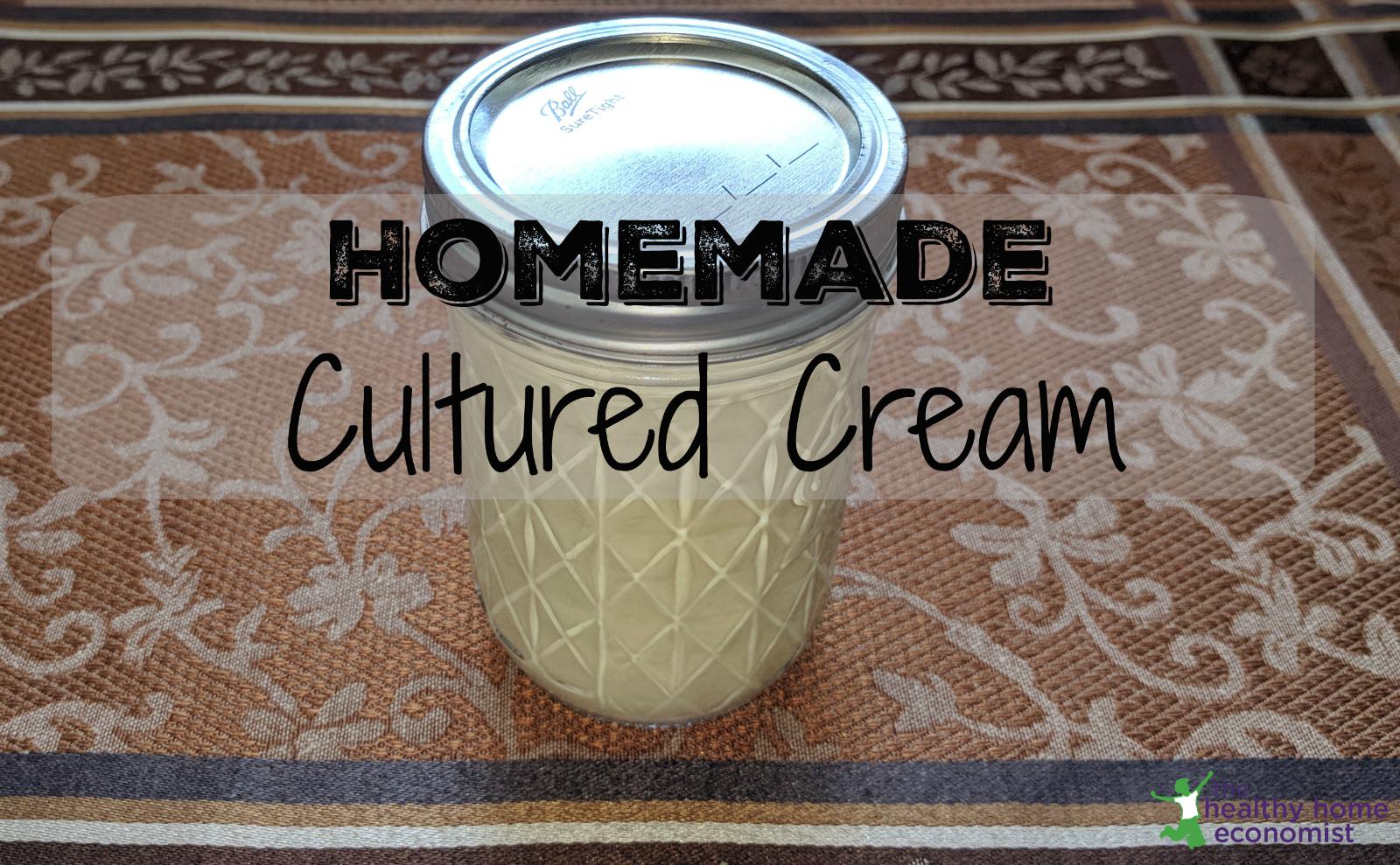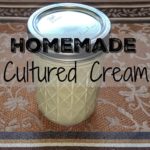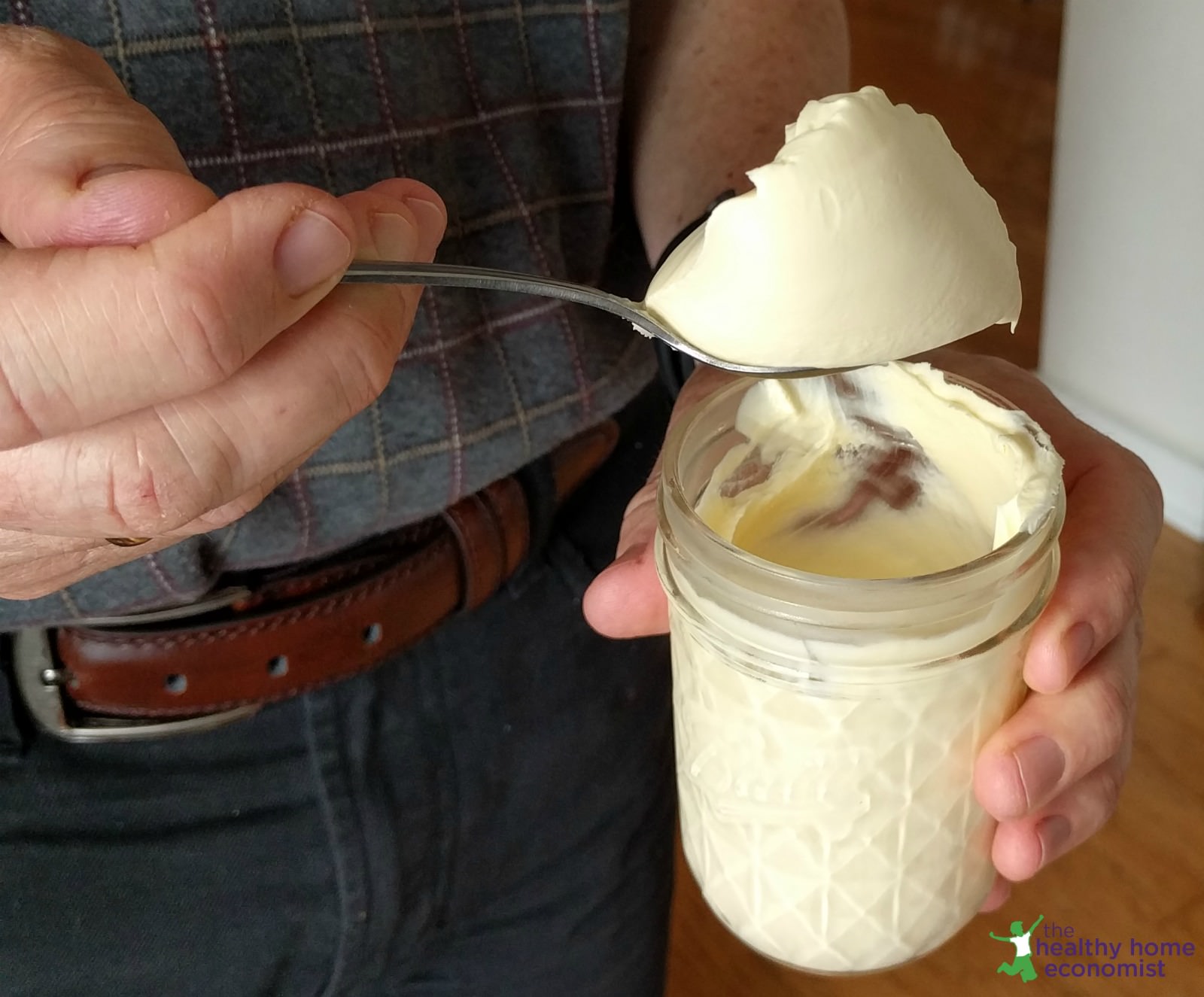 It probably comes as no surprise that commercially available brands of sour cream and crème fraîche bear little to no resemblance to their form in healthy, traditional diets. Usually containing numerous additives and thickeners, modern cultured cream is also (ultra)pasteurized, meaning it contains no probiotics or enzymes. This fact alone should convince you to steer clear and try your hand at making homemade sour cream and its milder tasting cousin crème fraîche.
It probably comes as no surprise that commercially available brands of sour cream and crème fraîche bear little to no resemblance to their form in healthy, traditional diets. Usually containing numerous additives and thickeners, modern cultured cream is also (ultra)pasteurized, meaning it contains no probiotics or enzymes. This fact alone should convince you to steer clear and try your hand at making homemade sour cream and its milder tasting cousin crème fraîche.
These cultured dairy toppings are two of the simplest fermented foods to make, in fact. Only one step is required and you don’t need any sort of specialized starter!
It is an easy and nutritious “upgrade” to your family’s diet from unhealthy, hard to digest, allergenic commercial versions.
Sour Cream or Crème Fraîche
You’ve probably already guessed from the name, but crème fraîche is a traditional French topping. Historically, it is made by thickening heavy cream with the addition of small amounts of cultured dairy. Examples are yogurt, soured milk or buttermilk. Kefir is also acceptable, though it is not traditional to French cuisine.
Sour cream is very similar, containing a bit less fat (20% vs 30% for crème fraîche). This is accomplished by diluting heavy cream with a slightly larger amount of cultured dairy than is necessary to make crème fraîche. The result is a cultured cream that is more tangy in flavor.
Because crème fraîche is so mild tasting, it is fabulous atop soaked pancakes or sprouted waffles instead of a sweeter tasting whipped topping. A spoonful added at the table to a bowl of soup made with homemade bone broth adds beneficial enzymes to this fully cooked dish. Be sure the soup is not too hot when you stir it in, else the precious enzymes and probiotics will be lost!
Sour cream’s stronger flavor makes it a favorite with baked potatoes and homemade dips. My favorites are this recipe for a sweet onion dip. This recipe for artichoke dip is a good one to take to parties. Some people use homemade sour cream instead of mayonnaise on sandwiches too.
Look how thick and yummy it looks when you scoop it out with a spoon when it is ready to eat! My hubby is in love with it and happily posed for this picture! Notice also how beige this grassfed cultured cream is. Store bought sour cream and crème fraîche are white indicating a very low level of nutrition as the dairy cows were likely confined with little to no grazing on green pasture.
Which Cultured Cream to Choose?
Ultimately, the choice of when to use each of these healthy cultured creams is dependent on your own set of taste buds. My recommendation is to make both because it is so easy and affordable to do so! They last for many weeks in the refrigerator, giving you ample time to discover which one you prefer with your favorite dishes.

Homemade Sour Cream and Crème Fraîche Recipe
Probiotic-rich homemade sour cream and crème fraîche recipe made in a single step. A traditional and healthy substitution for commercial brands that contain numerous additives and thickeners.
Ingredients
Crème Fraîche
- 6 ounces heavy cream preferably raw and grassfed
- 2 Tbl plain whole milk kefir
Sour Cream
- 5 ounces heavy cream preferably raw and grassfed
- 3 Tbl plain whole milk kefir
Instructions
-
Place heavy cream in a half pint sized, 8 ounce mason jar. Stir in the appropriate amount of kefir depending on whether you wish to make crème fraîche or sour cream.
-
Be sure to leave an inch at the top. Screw on the lid and leave on the counter at room temperature for 24 hours.
-
Use and enjoy!
-
Refrigerate after 24 hours on the counter. Both of these cultured creams will last for many weeks in the refrigerator, although the flavor will grow stronger over time.
Recipe Notes
Fresh, raw grassfed cream works best for this recipe. You may use slightly soured raw cream too, but it will result in a stronger flavor to your cultured cream.
In a pinch, you may use pasteurized grassfed cream (Natural by Nature is a good brand available at Whole Foods). Do not use ultra-pasteurized (UHT) cream. Note that the risk of the fermentation "not taking" is greater when using pasteurized cream, though still quite low given that the fermentation time is only 24 hours.
You may use either store bought or homemade kefir to culture the sour cream or crème fraîche. I do not suggest commercial yogurt, as it is not fermented for a sufficient length of time to be strong enough to culture the cream. If you make proper, 24 hour yogurt at home, then you may use this instead of kefir.
Other options to mix with the heavy cream include raw clabbered milk or cultured buttermilk. Enjoy the process of experimenting to find the fermented dairy that produces the most desirable texture and flavor for your homemade sour cream and crème fraîche!
Remember that home fermentation is not an exact science - it is a highly creative endeavor affected by many variables including the season of the year, the temperature and humidity of your home, and even the amount of light in the kitchen. Enjoy the journey of learning what works best in your home!
Sarah, The Healthy Home Economist









Hi Sarah! Thanks so much for your helpful recipes and videos. I’m afraid I’ve become a bit dangerous as I begin my raw dairy journey….I’m getting the various fermenting tools confused. I just used whey, that I separated from active yogurt, instead of kefir for the crème fraîche recipe above. Ooops! I’m assuming I’ll need to throw it out??
“Historically, it is made by thickening heavy cream with the addition of small amounts of cultured dairy”
NO.
That’s the modern industrial way. I’m French, and traditionnally FOR REAL, crème fraîche is what you get when you leave whole milk sitting for a few hours: the cream floats up and farmers scoop it from the milk to separate it. Crème fraîche was never meant to be fermented ever and believe me, these commercial substitutes that last longer taste nothing like the original thing.
Now having said that, I’ll definitely try my hand at your receipe because I’m a sucker for cream <3
It seems you are mistaken. Commercial versions aren’t thickened with cultured dairy which you suggest is “the modern industrial way” … they are artificially thickened with emuslifiers. Also, if you let whole milk sit and scoop up the cream off the top, that is not creme fraiche. That is just cream! Creme fraiche is most definitely lightly fermented!